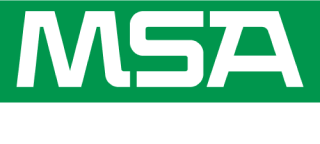
Whether you have an existing respiratory protection program or are developing one for the first time, the fundamental goal is the same: to protect workers from harmful atmospheres as part of a hierarchy of controls within their workplace.
Of course, a respiratory protection program must comply with OSHA 29 CFR Part 1910.134 or CSA Z94.4 and possibly other state or industry standards. But it’s also important to understand the need for respirators, how they work, and what their limitations are as you take these standards into consideration. US and Canadian standards both require employers to have a written respiratory program.
Here are the seven key elements of a sound respiratory protection program.

Download the guide to share with your team!
Having guidelines, procedures, standards, and best practices is one thing—documenting them is another. Careful documentation is vital because it helps ensure the program includes all required and relevant elements, detailing the particulars so that others can understand and be accountable for them. Further, according to OSHA, a written respiratory protection program is required because it helps employers, employees, and compliance officers gauge the adequacy and effectiveness of the program.
It’s a fact: You cannot counteract a hazard if you don’t know it exists. As part of a respiratory protection program, employers should evaluate respiratory hazards in the workplace, including use factors, personal exposure monitoring, and particulate concentration levels. Performing a simple calculation of worst-case exposures and factoring the results in with workplace size, ventilation, operation type, and worker proximity to emission source, can yield critical information for choosing the correct type and level of respiratory protection for the job.
When possible, controlling contaminants at the outset is an effective way to reduce hazards and improve worker safety. But that requires an honest evaluation of relevant processes and equipment, as well as plant design. In order to determine if engineering controls can reduce or eliminate exposure, employers should ask themselves such questions as, “Can we isolate or encapsulate the process?” “Are there other, less toxic materials or substances that can be used?” “Would the addition of exhaust ventilation, filters, or scrubbers help control effluents?” Sometimes it’s not practical for processes to be altered or substances to be eliminated. In such cases, it’s important for employers to choose proper respiratory protective devices.
Respirators fall under two classifications: air-purifying and air-supplied. Air-Purifying Respirators (APRs) range from simple disposable cup masks to low-maintenance half-mask facepieces with cartridges and/or filters to the more complex PAPRs with full- facepieces or hoods. Supplied-Air Respirators (SARs), comprise air-line respirators, SCBA, and combination (supplied-air) respirators. Which to use depends on the workplace, the wearer, the hazards, and the particulates—which means that other than being NIOSH-approved, there is no one-size-fits-all solution. There are many types of respiratory protective devices, each varying in design, application, and protective capability, so a sound respiratory protection program will tailor respirator selection based on several unique factors, including toxicity, IDLH concentration, wearer fit, mobility requirements, and a whole lot more.
Employers are required to instruct all workers who use respiratory protection equipment on which devices are suitable for the application, as well as each devices’ capabilities and limitations. Workers also must be trained on the actual use of the respiratory protection equipment. And, according to OSHA, each wearer must be fit-tested for any half or full face-mask using an eight-point quantitative fit test.
A meticulous maintenance program goes a long way toward the success of a sound respiratory protection program. What does that look like? Inspecting equipment before and after each use, and recording the date of all inspections. While the OSHA standard requires employers to provide users with a respirator that is “clean, sanitary, and in good working order,” OSHA also permits employers to tailor the maintenance program as long as it includes: cleaning and disinfecting procedures, proper storage, defect and leak check inspections, and repair methods. OSHA also recommends that employers consult manufacturer instructions for inspection, cleaning, and maintenance to ensure that the respirator “remains as effective as when it was new.”
It goes without saying that wearing proper respiratory protection can help protect the worker. But, as OSHA points out, it also can “place a physiological burden on employees that varies with the type of respirator worn, the job and workplace conditions in which the respirator is used, and the medical status of the employee.” For this reason, OSHA charges employers with the responsibility of ensuring that employees are medically fit to withstand the physical and psychological stresses imposed by the respirator, the job, and the workplace conditions. As such, employers should include both medical evaluation and ongoing medical surveillance as part of their written respiratory protection program.
Learn more about these key respiratory protection program elements as well as additional guidance about respirator types and choosing the equipment you need with MSA’s Key Elements of a Sound Respiratory Protection Program. This guide includes:
- When and why respirators are needed
- How respirators work
- What respirators can (and can’t) do
- OSHA’s Assigned Protection Factors table
- And much more …
Download your free guide below!






